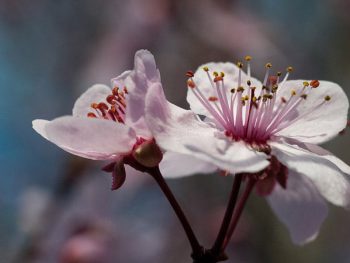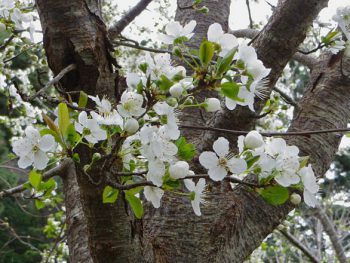Perhaps you are a plum enthusiast or have a huge green thumb when it comes to growing all sorts of fruits and vegetables in your garden. Regardless of who you are, it is always an important aspect to know just when certain trees bloom to produce their fragrant flowers and/or ripe fruit.
That said, you might be wondering just when do plum trees bloom. In this article, we will answer that question, as well as other related ones concerning this specific fruit tree. Hopefully, by the end of it, you will have a better understanding of how to cultivate and utilize the tree to its full potential. Let’s start!
Are There Different Types of Plum Trees? If So, What Are the Differences?
You might be surprised to discover that there is a large variety of different plum trees out there. Typically, they are broken down into three categories: Damson, European, and Japanese. The European varieties range from Italian to English plum trees, and are also planted in the United States.
On the other hand, Japanese plum trees grow where other fruit trees flourish, and the Damson plum tree can be found in England as well- its fruit is especially used to make jam preserves. There are also hybrid versions of each, which might make them hardier when growing.
How Do I Know If the Plum Tree I Have Requires Cross Pollination or Not to Grow?
Especially if you are a fruit expert, you will know that some fruits (e.g. plums) require the act of transferring pollen (or seeds) of one variety of fruit to another, in an act known as cross pollination, while others do not need to at all. That said, how can you know the difference?
The most important factor when determining this otherwise tricky growing situation is the hardiness of each respective species. For instance, Japanese plums can grow between zones 5 and 9 while European varieties can do so in zones 4 through 10.
As for characteristics, Japanese plums are typically self-sterile, thereby requiring cross pollinate; European ones are either partially or completely self-sterile. However, you cannot cross pollinate both the Japanese and European plums together, for they have different blooming patterns and environmental backgrounds to grow. It is a matter of doing research beforehand to determine compatibility.
When Do Plum Trees Tend to Bloom?
Since there are a variety of different plum trees, the blooming periods for each one will depend on the season. For instance, English plum trees tend to bloom in the early spring and, depending on the amount of frost still there, plums can grow either quicker or slower than usual afterwards.
As for Japanese plum trees, they actually bloom earlier than that of the European, sometimes as early as winter. Usually, the harvest period afterwards takes place between 140 to 170 days, as well as chill hours to ensure that the fruit is in good condition.
How Do I Care for Plum Trees?

To maintain plum trees, clearing extra branches and otherwise pruning them from time to time will prevent them from breaking off. It is best to prune them between spring and summer to prevent diseases from happening in the colder seasons.
For more information on how to choose a good pruning saw, check out this article.
Additionally, it is important to water them frequently, especially after first planting them into the soil to help them start off growing efficiently. It is also a good idea to keep on watering them until the winter season, in order to ensure that there is enough moisture for the plants to grow.
Finally, know the possible diseases that can happen for the plum trees (e.g. silver leaf, bacterial canker, etc.) and know how to prevent and otherwise get rid of them should they happen to infect your tree.
Conclusion
Plum trees can serve as a wonderful addition to your garden by yielding beautiful flowers and lovely, delicious fruit afterwards. While knowing when exactly do they bloom can be tricky, but by knowing these easy points, you will have no problem at all:
- Determine the type (European, Japanese) and research their characteristics.
- Find out if it requires cross pollination or not.
- Learn to care for them well to ensure good outcomes.
I hope you found this article helpful. Feel free to comment if you have any other questions.
Happy gardening!














I planted a methley plum tree 6 years ago and it has yet to bear fruit.